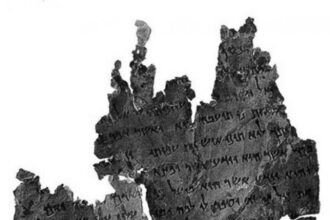Table of Contents
ToggleCan AI Tell Us Who Wrote the Bible? A New Study Says Yes
Recent research confirms that AI can identify the authorship of various sections of the Bible by detecting distinct writing styles using computational methods. This breakthrough combines artificial intelligence and statistical analysis to map unique linguistic patterns within biblical texts. The study distinguishes three main biblical writing groups and offers a new, objective approach to biblical authorship analysis.
Identifying Different Writing Styles in the Bible
The research reveals that diverse writing groups in the Bible leave identifiable linguistic fingerprints. These include distinct usage patterns of common words like “not,” “which,” and “king.” Prior to this, biblical scholarship relied heavily on subjective literary analysis without a systematic computational tool. This new study changes that by applying data-driven methods to biblical texts, allowing for an unbiased examination of authorship.
Three Main Biblical Writing Groups
- Early texts in Deuteronomy
- Texts from the Former Prophets: Joshua, Judges, Samuel, and Kings
- Priestly writing: primarily in Leviticus and Torah sections
These groups show clear stylistic differences, discernible through AI-driven analysis of their language features.
Study Methodology
The research team combined experts from various institutions. Members included Dr. Shira Faigenbaum-Golovin (Duke University), Dr. Alon Kipnis (Reichman University), Axel Bôhler (Paris), Eli Piasetzky (Tel Aviv University), Prof. Thomas Römer (Collège de France), and Prof. Israel Finkelstein.
Computational Approach
- The team created a model analyzing the frequency of word roots and their combinations (pairs, triplets).
- They tested the model on 50 chapters from the Bible’s first nine books. These chapters were already categorized by biblical scholars into the three main writing groups.
- The model was then applied to disputed texts, including narratives about the Ark of the Covenant (1 and 2 Samuel), the Book of Esther, sections from Proverbs, patriarchal Genesis stories, and parts of Chronicles.
Findings and Implications
The study finds that vocabulary frequency and phrase patterns uniquely characterize each group’s writing style. Notably, the model works effectively even on short texts, establishing its robustness.
Explaining AI Conclusions
The AI can specify exactly which words or expressions influenced classifying a text into a particular group. This improves transparency, making the AI’s decisions interpretable and verifiable by scholars.
Insights into Biblical Text Evolution
Detecting linguistic differences helps trace how stories and laws evolved over time and through various authors. It supports or refines traditional theories about biblical composition and editing.
Broader Applications
This method promises to be a valuable tool for biblical scholars, linguists, and historians studying ancient manuscripts. It may eventually apply to other ancient texts to analyze authorship and textual history.
Summary of Key Points
- AI distinguishes between multiple biblical writing styles.
- The study identifies three main author groups: early Deuteronomy, Former Prophets, and priestly writings.
- The model analyzes frequencies of word roots and combinations with statistical precision.
- Applied successfully to disputed and undisputed biblical texts, confirming previous scholarship and revealing new insights.
- The method increases transparency by explaining its classification decisions.
- Findings contribute to understanding the Bible’s evolution and may assist in studying other ancient writings.
Can AI Tell Us Who Wrote the Bible? A New Study Says Yes
Yes, AI can identify who wrote parts of the Bible by analyzing different writing styles with statistical accuracy. This study marks a breakthrough in biblical scholarship. For centuries, scholars debated the Bible’s authorship using literary clues and historical context. Now, artificial intelligence steps into the spotlight, offering fresh, data-driven insights that promise clarity.
Imagine blending the wisdom of ancient texts with cutting-edge technology—this is exactly what a team of international researchers has done. They combined artificial intelligence with rigorous statistical tools to sift through the Bible’s complex tapestry. Their goal? To pin down distinct writing “fingerprints” within the sacred texts.
The AI and Statistical Tools Odyssey
Before this study, identifying the Bible’s contributors relied mostly on subjective literary analysis. That approach, while insightful, lacked a systematic and objective method. The team’s novel strategy changed that by applying computational models to biblical text.
They focused on three well-known groups of biblical writings:
- Early texts of the Book of Deuteronomy
- Texts from the Former Prophets—Joshua, Judges, Samuel, and Kings
- Priestly writings primarily in Leviticus and other Torah sections
Each group carries unique linguistic patterns—referred to as “linguistic fingerprints.” For example, they discovered differences in usage of common words like “not,” “which,” and “king.”
“We found that each group of writers had a different linguistic fingerprint—even in common words,” explained Prof. Israel Finkelstein, a leading archaeologist on the project.
The Brainy Team Behind the Discovery
This ambitious project pulled together experts across disciplines and continents. The team featured computer scientists, biblical scholars, and historians from Duke University, Reichman University, Tel Aviv University, the Collège de France, and others.
Among them were:
- Dr. Shira Faigenbaum-Golovin (Duke University)
- Dr. Alon Kipnis (Reichman University)
- Axel Bôhler (Faculty of Protestant Theology, Paris)
- Eli Piasetzky (Tel Aviv University)
- Prof. Thomas Römer (Collège de France)
- Prof. Israel Finkelstein
The goal? Develop a computational model that could recognize biblical writing styles without relying on pre-selected keywords or subjective biases.
How the Model Works: Words Are Clues
The heart of their approach is analyzing word frequency — but not just any frequency. They examined individual word roots and combinations such as pairs or triplets. This linguistic “signature” acts like a fingerprint, uniquely identifying each writing group.
Here’s an example: A phrase with a particular combination of roots might appear frequently in priestly texts but rarely in the Former Prophets. Pattern recognition lets the AI spot these subtle cues.
To validate their model, the team tested 50 chapters from the first nine books of the Bible, which biblical scholars had already classified into the three writing groups.
Then they moved on to more disputed texts, a move that every biblical scholar secretly hopes for. They analyzed stories like the Ark of the Covenant (from 1 and 2 Samuel), the Book of Esther, sections of Proverbs, patriarchal narratives from Genesis (Abraham and Jacob), and parts of Chronicles.
What Did They Find? Vocabulary Holds the Keys
The findings are fascinating. AI accurately identifies the authorship of texts through vocabulary and phrase patterns—even in short passages. This method explains its conclusions by highlighting the exact words or expressions responsible for a classification. No guesswork, no mystical interpretations.
For instance, when the AI assigned a chapter to the priestly writer group, it could point to words like specific ritual terms or unique phrasing styles common in Levitical texts.
These linguistic fingerprints help us trace how the Bible evolved over time. It gives new evidence supporting theories that different groups wrote or edited the text during various historical periods.
Why Does This Matter? More Than Just Ancient History
This study is a game-changer. It provides biblical scholars, linguists, and historians with a powerful new tool. A tool that can test long-held assumptions, clarify ambiguities, and even raise new questions.
More excitingly, this technology isn’t limited to the Bible. It could analyze other ancient writings far beyond, assisting in deciphering texts where authorship remains a mystery.
So, next time you’re flipping through the Bible, remember: each chapter might wear the digital signature of its ancient scribe, now unveiled by AI.
What’s Next? Opening Doors for Ancient Text Research
The practical applications of this study extend beyond academia. What if AI helps identify forgery or inconsistencies in religious texts? What if it aids in preserving endangered languages by detecting distinct dialects? The possibilities grow every day.
For the curious mind, this blend of AI and ancient texts sparks a deeper question:
Can technology unlock truths hidden for millennia in words we thought we already knew?
In this case, the answer is a resounding yes.
How does AI distinguish between different biblical writing styles?
AI analyzes word roots and combinations within the text. It identifies unique linguistic patterns or “fingerprints” used by different biblical authors.
Which biblical sections were identified by AI in the study?
AI detected three groups: early texts from Deuteronomy, the Former Prophets (like Joshua and Kings), and priestly writings mainly in Leviticus and parts of the Torah.
Can this AI method explain why it classified certain texts a specific way?
Yes, the system highlights specific words or expressions that led to its decisions. This transparency helps scholars understand its analysis.
What new insights does this AI study offer about the Bible’s authorship?
The study shows that biblical writing evolved distinctly across groups, confirming varied authorship through measurable language patterns.
Will this AI approach work with other ancient texts?
Researchers expect it to help analyze other ancient writings, offering an objective tool for historians and linguists studying early documents.





